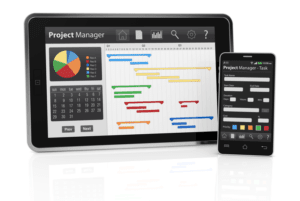![]()
Medicaid and other high-volume payers, however, take provider claims straight. Medical billers must have comprehensive information on every insurance payer, as there are several variables to consider when deciding when and how to file a claim. To ensure that contact and insurance information is up to date and accurate, the front office staff must verify the accuracy of a patient’s records during consecutive interactions. This status report shows the portion of a patient’s bill that the insurance companies or Medicare has paid. It also elaborates an estimate of what percentage of the remaining amount shall be covered by insurance coverage in every case.

Do I need a medical billing service?

Patient registration is the first and one of the most crucial steps in the medical billing and claims processes. Healthcare providers gather demographic details like full name, date of birth, address, and emergency contacts. Additionally, they obtain insurance information, such as the policy number, plan details, and any secondary insurance coverage if applicable. unearned revenue The goal is to create a comprehensive patient profile that will serve as the foundation for the entire billing process.
Other Important Factors in Healthcare Billing

The process typically includes patient registration, insurance verification, coding, charge entry, claim submission, payment posting and denial management. In instances where patients have outstanding bills, Neolytix’s system identifies such cases and streamlines the process of engaging with collection agencies. This strategic approach ensures that outstanding balances are systematically addressed, contributing to financial recovery and stability for healthcare providers. By managing the DME process in medical billing (Durable Medical Equipment), we ensure that claims for equipment such as wheelchairs and hospital beds are accurately processed and reimbursed. Our approach includes a diligent cash posting process in medical billing, which involves recording payments accurately to maintain financial records. Our mission is to empower medical professionals by providing top-notch resources and support.
What are common reasons for claim denials?

As a healthcare provider, you are undoubtedly aware of the importance of getting paid for the services you provide. After all, your practice would quickly become unsustainable without proper medical billing. It’s essential to record notes during or right after the patient’s visit for accurate medical coding. Ideally, one should keep a clear record of all the diagnoses, treatments, medications, and services rendered in the electronic medical record (EMR).
- Outsourcing medical billing can be beneficial for practices that do not have the time or resources to handle billing in-house.
- A billing auditor checks the document for errors and fixes any identified mistakes.
- Administrative fees, set-up fees, training, licensing, and other expenses may be included.
- The coding team should double-check coding to avoid mistakes in billing by ensuring consistency and accuracy.
- Talk to your healthcare provider’s billing department if you’re having trouble paying your bill.
Medical Procedure Codes
For unpaid balances, accounts may be sent to collections after a set period, often accompanied by reminder statements or calls. Effective collections strategies are essential for maintaining financial stability. Some providers utilize automated payment reminders or partner with collection agencies to manage delinquent accounts while upholding ethical billing practices. Claims must be sent on time and must be error-free to maximize reimbursement efficiency. Medical billing staff often use standard claim forms, such as the CMS-1500 for outpatient services or the UB-04 for hospital billing.
Proper coding is essential to ensure that insurance companies understand the services provided, enabling smooth claim processing. Overall, the medical billing process is essential to the financial health of your practice. While there are some challenges involved, working with a medical billing company can help to make the process simpler and more efficient. Patient statements with any unpaid bills must be sent out as soon as possible after the posting of remittance advice. While the majority of insurance companies follow industry standards for billing, some follow special protocols.

Follow Up
- Medical accounts receivable services involve recording incoming payments from insurance companies and patients (for co-pays or deductibles).
- During this step insurance information is also collected, this includes collecting the patient’s policy number and the name of their insurance provider.
- Another aspect where training becomes super important is in the area of claims transmission.
- Submission occurs when a claim’s compliance and accuracy have been confirmed.
- The medical billing business subsequently submits an insurance claim for these costs to get paid by the insurance company.
- All this means doing the process carefully from start to finish by following industry guidelines and using complaint templates.
This builds trust and transparency, reduces problems with denied claims, and improves the efficiency of billing. The future of the medical billing process may include more sophisticated systems for creating personalized payment plans based on individual patient financial situations and payment histories. The healthcare industry is constantly evolving, with new regulations and policies affecting the medical billing process. Staying informed and Partnership Accounting adapting to these changes is crucial for compliance and successful billing. With MDS, healthcare facilities can expertly manage the complexities of medical billing, prioritizing patient care while strengthening their financial foundation. Each step in the medical billing cycle requires attention to detail and proper documentation.
Patient Registration
Practices need to be prepared to adapt their billing procedures to medical billing process steps align with new reimbursement models. Although medical services are standardized through codes, the fees aren’t standardized. For example, if you charge $300 for primary care visits, you’ll list $300 alongside the CPT code for primary care visits in your claims. These steps involved in the medical billing process provide the readers with an in-depth understanding of “ what is medical billing” and the steps involved in it.

Comentarios recientes